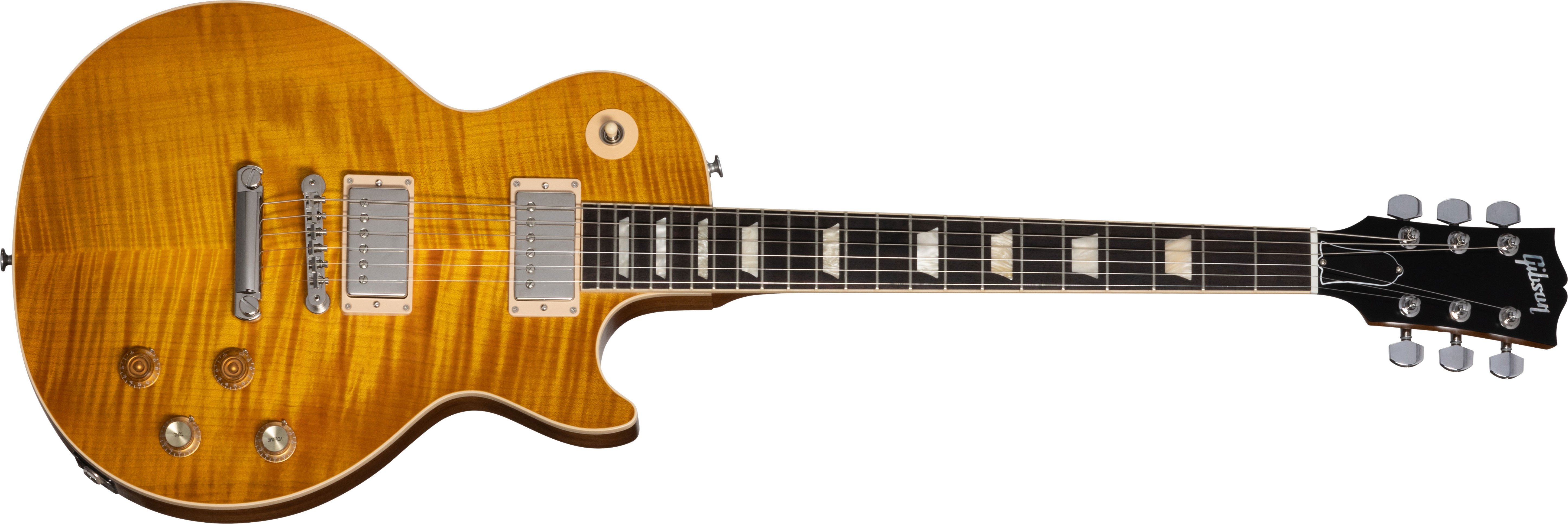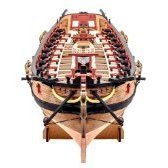Supplies of the Ship Modeler's Handbook are running out. Get your copy NOW before they are gone! Click on photo to order.
×
-
Posts
6,005 -
Joined
-
Last visited
Reputation Activity
-
 James H reacted to chris watton in Wood filler vs. spackle
James H reacted to chris watton in Wood filler vs. spackle
I use Ronseal multi purpose wood filler. It is water based and I find it perfect for wooden model applications (Have even used it to simulate deck caulking!), as it can be thinned into a paste using water - plus it is very easy to sand. I find standard olde-type filler too hard - almost like concrete when set.
-
 James H reacted to runner63 in Wood filler vs. spackle
James H reacted to runner63 in Wood filler vs. spackle
My method is to save the sanding wood dust and mix it with white glue and make my own filler.
runner63
-

-
 James H reacted to Suzanne1979 in King of the Mississippi by john46 - FINISHED - Artesania Latina - scale 1:80
James H reacted to Suzanne1979 in King of the Mississippi by john46 - FINISHED - Artesania Latina - scale 1:80
Dear forum-friends of John,
Thank you for all your beautiful words of appreciation and compassion. Also on behalf of my mother I want to thank you for this. For us it’s a bit of comfort.
As I promised, I have some pictures of his latest project, the King of Mississippi, which we will keep as it is for remembering the work he enjoyed so much. I will publish these pictures in a few minutes in his gallery.
With love,
Suzanne and Carla.
-
 James H got a reaction from Mick in King of the Mississippi by john46 - FINISHED - Artesania Latina - scale 1:80
James H got a reaction from Mick in King of the Mississippi by john46 - FINISHED - Artesania Latina - scale 1:80
Hi Suzanne,
Please allow me to extend my deepest sympathies to you and your family at this time. 67 is far too young to pass, and I can't even begin to imagine the heartache and sadness you'll be feeling now.
John will be sorely missed here. At MSW, he was amongst friends too. Please pass my regards to your family. I'm thinking of them.
Jim
-
 James H reacted to md1400cs in Wasa by md1400cs - FINISHED - Corel - 1:75
James H reacted to md1400cs in Wasa by md1400cs - FINISHED - Corel - 1:75
Original installed piece. Hmmm wrong !!Vasa original (the only one, of the three, to survive)Ferit thanks
Thank you JPett and Joachim
A minor update, but apparently a significant one, I owe this change to Blue Ensign and Ferit.
They were discussing the spectacular capstan that F installed on his Berlin (If you have not visited his build log you are really missing an astonishing upgrade for the basic kit).
So it turns out that the "parts bin" capstan supplied by Corel for the Wasa is period inappropriate. Something I had no knowledge of, not surprising in that I am just now learning so much...
Pulled the piece and rebuilt a more period looking example. I learned how to do square cuts from Ferit (not to his level, but...)
So I include these updates. Again thank you B E and F you own this change. THANKS
Michael
-
 James H reacted to md1400cs in Wasa by md1400cs - FINISHED - Corel - 1:75
James H reacted to md1400cs in Wasa by md1400cs - FINISHED - Corel - 1:75
Joe, and Buck thanks for taking an interest in following this build. Your kind words are appreciated.
So I decided to complete the upper part of the stern, that also incorporates details to the upper deck. The pics are self evident so I won't add comments.
However, in general. I tried, several times to paint the deck side of the upper gilded piece. The paint would not hold well, and it looked super weak. So I went with vertical wood beams. It looks as though the 1:1 used a solid piece, or so, to carve out the griffons (that reminds me, I have to add a couple of tongue marks) and a young beardless inherited king (thank you Fred Hocker from his book Vasa A Swedish Warship)
I also learned painting this piece that the King's initials were carved into the wood. G A R S (Gustavus Adolphus Rex Sueciae) To their absolute credit Corel did an excellent job of crafting this piece. I had posted earlier, then retracted, as I will again. Corel's figures for-all-intense-and-purposes are actually really excellent. Kudos to their design team. The only exception being the weak figures that cover the galleries- go figure?
One last thought these is an occasional metal bleed through between the vertical planks. I could not paint that part and then add wood to the metal. It would have poorly adhered. I did not notice the small gaps until I stated adding the large cross members. OK enough chit-chat on my part here are a few pics.
Regards, Michael
-

-
 James H reacted to Shazmira in San Francisco 2 by Shaz - FINISHED - Artesania Latina - Wood
James H reacted to Shazmira in San Francisco 2 by Shaz - FINISHED - Artesania Latina - Wood
finished the deck furnishings!!!!
Cannons are complete
Lifeboat is done and tied down. I plan to add some oars but have to wait for the wood I ordered to get here. Should be able to add those easy enough.
Time to start the masts!!!
-
 James H reacted to Shazmira in San Francisco 2 by Shaz - FINISHED - Artesania Latina - Wood
James H reacted to Shazmira in San Francisco 2 by Shaz - FINISHED - Artesania Latina - Wood
Busy day today, but progress has been made.
Finished making wheels for the carriages
Made the little ropes that hold them in place
Had to drill holes in the sides of the carriages for the restraining lines
Used my high-tech tools to insert and hold the restraining lines into to holes on the carriages (toothpicks)
Added "brass" straps to the tops of the carriages. these straps are actually made of gold foil which I found in the candy making aisle..seems to simulate what i needed it to. Wish I'd had this when I was making the hinges for my doors.
first 4 cannons installed!!!
-
 James H reacted to Shazmira in San Francisco 2 by Shaz - FINISHED - Artesania Latina - Wood
James H reacted to Shazmira in San Francisco 2 by Shaz - FINISHED - Artesania Latina - Wood
Okay, i have straightened out the deck furniture and made sure everything is now centered and straight on the keel line, and I made new pin racks so I could put the proper distance between the belaying pins.
Unless someone sees anything else I need to fix or improve speak now please before I start on the masts and the rigging.
-
 James H reacted to schiffebastler in Amerigo Vespucci 1931 by schiffebastler - Mantua - scale 1:84 - Italian sail training ship build
James H reacted to schiffebastler in Amerigo Vespucci 1931 by schiffebastler - Mantua - scale 1:84 - Italian sail training ship build
Hello,
after the warm welcome in this forum and the interest on a build log of the "Amerigo Vespucci", I will start it now.
As you may know it is an Italien sail training ship which was originally build 1931.
The model bases on the Mantua-Kit, which I tried to optimize according to pictures of the real Ship. I started to build the model in 1994, but just shortly after the begin, I had to disturb the building due to job, wife, house building, kids, ... A few years ago I restarted building the model again.
Some data:
Mantua Kit
scale 1:84
length 1,25m
hight 0,75m
In a german forum I have already started a build log of this ship a few months ago. Therefore, first I will present as an overview also the steps which I have done since this time. Unfortunately, I have got no pictures from the earlier steps, so I will start with a mostly ready body of the ship and show you first some detail pictures.
Hope, you enjoy it.
Best regards, Joachim
-
 James H reacted to ccoyle in Folke by ccoyle - FINISHED - Paper Shipwright - CARD
James H reacted to ccoyle in Folke by ccoyle - FINISHED - Paper Shipwright - CARD
I built this model in the spring of 2011. Folke was one of a small class of monitors built for the Swedish navy. Alone among her sisters, she carried her main gun facing aft, the idea being that she could cover a flotilla in the event of a withdrawal. My particular kit is the laser reprint sold by Paper Models International, but the model can also be purchased directly from Paper Shipwright. Owner David Hathaway has designed a number of monitor kits, as well as a variety of working craft. These kits are well-regarded in the card modeling community for their fit and detail.
The kit includes the printed parts on two sheets, instructions, diagrams, and railing templates. Step one is to build up the egg-crate style hull skeleton and attach the deck and sides, all temporarily affixed to a sheet of glass to prevent warpage.
-
 James H reacted to Anja in Half Moon by Anja - Corel - Wood - 1:50 - (d'Halve Maen)
James H reacted to Anja in Half Moon by Anja - Corel - Wood - 1:50 - (d'Halve Maen)
everyone and welcome (back) to my second buildlog.
I started this buildlog on May 4th 2012. I will repost my log from the beginning. So here goes………...
The discovery ship the Half Moon was a small and lightly armed galleon, although in VOC documents it is called a Yacht. And by Emanuel van Meteren (a Flemish Historian) even vlieboot (flyboat).
The original Half Moon (Halve Maen) was commissioned on March 25, 1609, for the Dutch East India Company. She was a ship of exploration and the spaceship of her age, designed to take a crew of twenty into unknown and uncharted waters.
Hired by the Dutch East India Company to find a Northeast, all-water route to Asia. but only a month out of port, the Dutch/English crew of his ship was disheartened after their passage north of Norway was blocked by Arctic ice floes. Many talked of mutiny. Sitting in his cabin, the concerned captain considered his dilemma and options. A compromise was made. The course was changed and what began as a search for a Northeast passage became a transatlantic crossing to look for a Northwest passage to the rich spice. trade of China. Of course, some think that Hudson's intention all along was to go Northwest.
Hudson in North America
After reaching the Maine coast and replacing a foremast lost in rough storms during her Atlantic crossing. the Half Moon sailed southward as far as the present day North Carolina Outer Banks. Then, turning northward, Hudson explored the Delaware Bay before arriving at the mouth of a wide river. Could this be a passage to the Pacific Ocean?
Hudson stopped at points on the New Jersey coast before sailing the small ship up the river which today bears the Captain's name, the Hudson River, but it was soon obvious that it was an inland river, not a west-ward passage. Hudson sailed upriver to present-day Albany before returning down river, and claiming the region for the Dutch.
It would be many years before the significance of Hudson s 1609 voyage to America would be understood, and the Half Moon universally recognized as one of the best known ships of exploration.
The Half Moon’s Specifications
The ship assigned to Hudson by the Dutch East India Company was small by 17th-century standards. Built in a Dutch shipyard of German and Danish lumber with a high forecastle and sterncastle, she resembledthe so-called Vlie boats the Dutch used on the Zuider Zee. England and the Netherlands were then fierce commercial rivals. The Dutch had a fleet of 1,680 ships, vastly outnumbering the 350 available to the English.
Being lighter and narrower, with their frames spaced much wider apart and using lighter planking topside, Dutch ships were faster than their English competitors, which had tightly spaced frames. Unlike English shipbuilders, the Dutch built their oceangoing vessels with flat bottoms to negotiate the shallow entrance to the Zuider Zee.
Because the original Half Moon was built using a simple geometric method called the tangent arc system, no comprehensive plans have survived. Even in the 17th century, industrial espionage was common; this may also explain why no plans have ever been found.
Although the Half Moon has a large amount of sheer (the upward curve of the longitudinal lines of the hull), the decks remain surprisingly level. Today, boats are built with decks following the sweep of the sheer. A horizontal deck offered many advantages: on warships with gun ports in a line, cannons on wheeled carriages could easily be served and moved. Level decks also could be flooded when needed, lowering the risk of fire and
explosion.
The rig and sail plan of the Half Moon are typical of square-rigged ships of the period: a square foresail and topsail on the foremast and foretopmast; a square mainsail and topsail on the mainmast and main topmast; a triangular lateen sail hung on a long yard attached at an angle to the top of the mizzenmast. A square spritsail hanging from the bowsprit. In all, the sail area measured about 2,800 square feet.
Type of ship : Yacht
Construction : Build in 1608 for the chamber of Amsterdam at a shipyard in Amsterdam
Purpose : Used by the Dutch East India Company from 1609 to 12/1618
Loading capacity : 80 Tons
Crew : 15-20
Sail Area : 256,13 m²
Length on deck : 25.9 m.
On the keel length : 19.7 m.
Height : 23.8 m.
Width : 5.3 m.
Draught : 2.6 m.
Thank you for watching and enjoy!
Take care,
Anja
-
 James H reacted to riverboat in HMAT Supply by riverboat - FINISHED - Jotika/Caldercraft- 1/64th scale
James H reacted to riverboat in HMAT Supply by riverboat - FINISHED - Jotika/Caldercraft- 1/64th scale
The planking begins!!!! After I finished the first planking I decided not to do the second planking since I was going to weather and paint the hull.
-
 James H reacted to Shazmira in San Francisco 2 by Shaz - FINISHED - Artesania Latina - Wood
James H reacted to Shazmira in San Francisco 2 by Shaz - FINISHED - Artesania Latina - Wood
Reposting previous and continuation of my build log.
I know a little OCD with my organization, but it works for me and keeps everything safe and away from my herd of dogs mouths.
Robbyn
-
 James H reacted to Erik Nyren in Fair American by Erik Nyren - FINISHED - LSS - POF (kit discontinued)
James H reacted to Erik Nyren in Fair American by Erik Nyren - FINISHED - LSS - POF (kit discontinued)
A few more pictures showing different stages of fairing. The high quality cherry that the frames are made of has a beautiful clean finish to them after fairing down to using 400grit sandpaper. I covered the keel with tape to protect it from the sandpaper used for the frames.
(Note the old MSW in the background)
-
 James H reacted to Erik Nyren in Fair American by Erik Nyren - FINISHED - LSS - POF (kit discontinued)
James H reacted to Erik Nyren in Fair American by Erik Nyren - FINISHED - LSS - POF (kit discontinued)
Construction starts by assembling the keel which is layered by several parts to form the notches for the frames. I had to read the manual several times to wrap my head around this but in the end it was not that complicated once I understood the basic idea. There has been an update to the kits construction after the first few kits which calls for reading the manual THOROUGHLY especially concerning the assembly of the keel.
BLFA1 :Principle of layers creating nothches. This principle is used throughout construction of the ship.
BLFA2:Notches and rabbet-line of the keel
-
 James H reacted to bbrockel in TRITON Cross Section bbrockel
James H reacted to bbrockel in TRITON Cross Section bbrockel
I started the TRITON cross section build as a first step toward scratch building. Or as they call it here the "Dark Side". The plans are very easy to follow, crisp and clean. It has been a pretty steep learning curve for me. Going from having most of the parts laser cut to having to cut and shape each piece myself. Had some set backs but for the most part, progress has been in the forward direction. I have postd a few pics with descriptions to cover my progress to date.
-
 James H reacted to amateur in Prins Willem by amateur - Corel - 1:100
James H reacted to amateur in Prins Willem by amateur - Corel - 1:100
Thisis how she was, one and a half year ago.
And to be honest, she is sitting on the table next to me, and I don't see much of a difference
More will follow soon.
Jan



